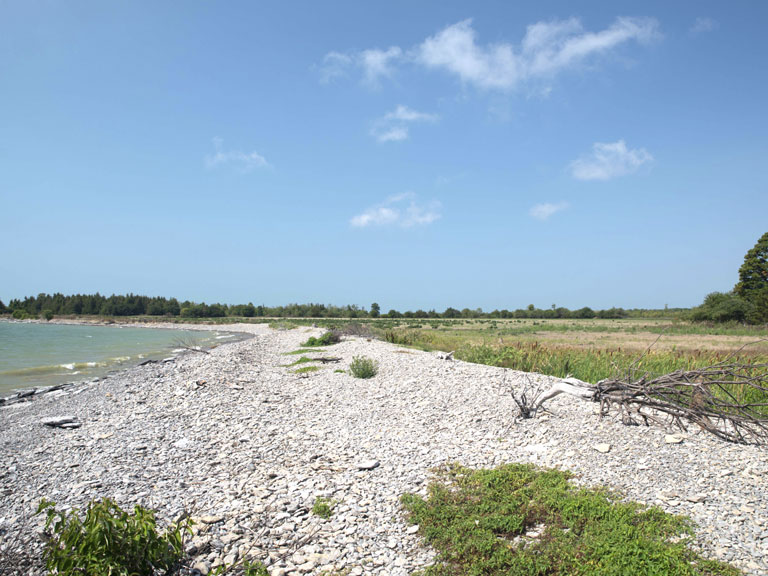County News
Settlement

New Shoreline Protection and Wildlife Corridors Adopted
The expansion of Quinte’s Isle Campark— a file that was first presented in 2016 and was approved by Council in April of 2021, and was then appealed to the Ontario Land Tribunal by Friends of the South Shore (FOSS), has officially been settled.
The Ward family have been hoping to expand the Campark to the east into land already owned by Quinte’s Isle, which is situated on 821 metres of frontage on Lake Ontario. The expansion would see another section named Pebble Beach East added to the trailer park, with an additional 337 park model trailer sites. These sites were meant for three-season, owner-occupied park model cottages, with access from an existing trailer park to the west.
The 337 sites will likely remain, but a revised development site plan will see substantial new ecological restoration across the site, including two new wildlife corridors and an improved climate- resilient process for shoreline protection and naturalization. The development site lies between two Provincially Significant Wetlands (PSW), with the Soup Harbour PSW to the east and the Salmon Point PSW just west of the existing Quinte Isle Campark. Both are among the last significant and intact coastal wetlands on Lake Ontario. “The ecological features of the site are better protected with this settlement, which was the primary goal of this appeal”, said David Donnelly, legal counsel to FOSS. “The County has new benchmarks to meet with respect to maintaining and creating critical wildlife corridors, ecological restoration, site plan design, public engagement, and First Nations consultation. FOSS deserves considerable credit for raising the bar for climate- resilient, good planning in PEC.”
According to a release, FOSS is contributing 50 per cent of the cost of hiring a professional landscape architect with ecological restoration expertise to design wildlife corridors that will provide safe movement and connected habitat between the wetlands for local species, including the endangered Blanding’s turtle. The wildlife corridors will include native trees, shrubs, and perennial vegetation that is essential to many species of nesting songbirds and the Monarch butterfly, a species-at-risk in Ontario. No buildings, structures, or other obstacles to wildlife movement will be permitted in the wildlife corridors. Notably, the wildlife corridors planned will support and amplify the Natural Heritage Linkage area identified in the County’s new Official Plan.
“We’ll never come to terms with how PEC proceeded with and approved the original proposal for this development, which was not permitted under the County’s Official Plan,” said Debra Marshall, Executive Director of FOSS. “However, we did achieve a much better result by using mediation and evidence, and therefore, our environment is better protected, and the planning process in PEC is improved.”
The agreement specifies the shoreline area shall be kept in a naturalized state, maintained, and enhanced in accordance with the recommendations of the professional landscape architect and current best evidence for climate-resilient design. The exact location of the shoreline protection area to be protected will be established by Quinte Conservation, who adopted an updated Shoreline Plan in June earlier this year. Additional new conditions include street lighting that is to be dark-sky compliant, wildlife crossing traffic signs to be added, and an emergency access road to be relocated to make way for an east/west wildlife corridor.
As a result of the settlement, the OLT approved the Official Plan Amendment to designate the subject lands as Shoreland. County council will review minor revisions to the proposed zoning by-law amendment in 2023. The detailed design for the project will be determined through the municipal site plan approval process.
Marshall added that FOSS raised the bar for climate-resilient and community- engaged inclusive planning. “Lake Ontario has precious few remaining places like Soup Harbour. During one of the darkest times in Ontario’s land use planning history, we are proud of our community’s effort to protect Soup Harbour, our natural and cultural heritage, and to improve the County’s process for regulating development.”

Comments (0)